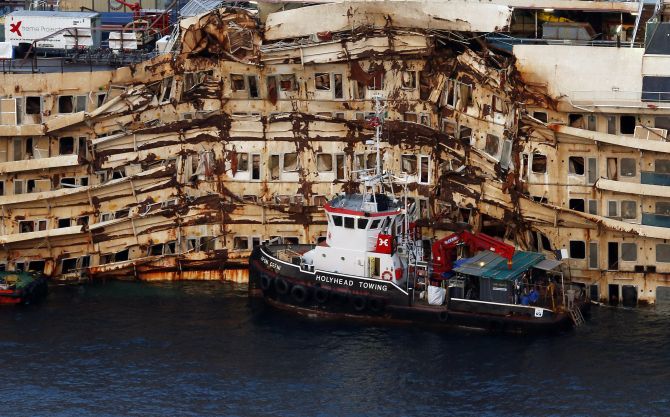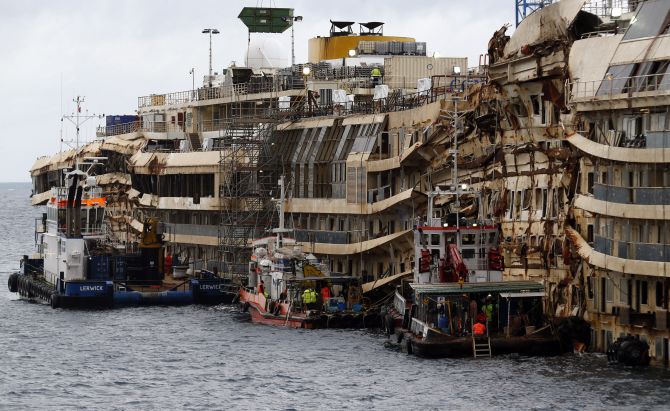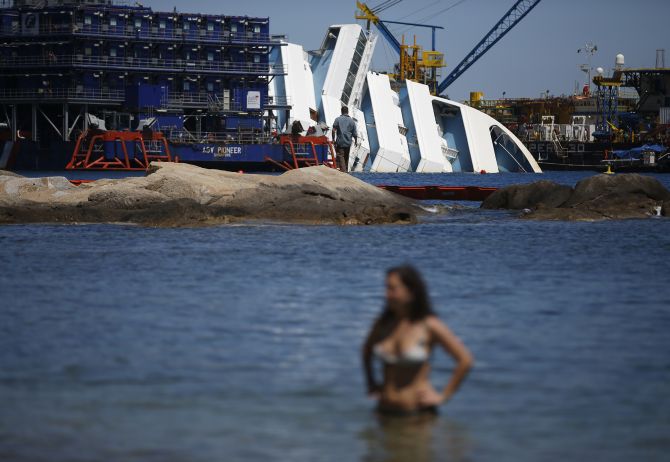
The unfortunate Costa Concordia, which struck a group of rocks just off Giglio on the night of January 13, 2012 in a disaster that claimed 32 lives, is finally to be refloated on Monday. The salvage team will commence on Monday as long as the weather is on their side.
The raising of the wreckage has been a long time coming. Last September, engineers flipped the capsized, mostly submerged ship upright in an operation that cost insurance companies hundreds of millions of dollars. Today, the ship sits on an enormous underwater platform built just for the occasion. It’s still partly underwater.
…

If all goes according to plans, the team will gradually fill compressed air into 30 airtight metal tanks, called sponsons, which are on either side of the ship. This will create enough buoyancy to lift the water-filled, 115,000 ton ship up off the platform.
However, in a worst-case scenario, some warn the hull could break apart and spill its rotting innards into the Tuscan Archipelago, one of Europe's largest marine sanctuaries.
…

Tug boats would then drag the wreck 30 metres east and secure it in place with anchors before it is slowly buoyed another 10 metres, with engineers checking each deck for fresh structural damage as they emerge from the sea.
The salvage operators also said there would be a no-fly zone and restrictions on shipping in place during the operation, which is expected to last several days.
…

The whole procedure is expected to take around six days. On or around July 20, the plan is then to tow the Concordia at two knots an hour some 240 kilometre north to the port of Genoa.
Salvage costs so far are estimated at around 1.1 billion euros (Rs 8,985 crore), including 100 million euros for the scrapping.